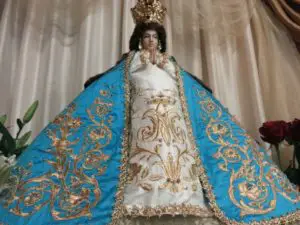There didn’t seem to be a lot of structure at Guadalajara Language Center, but somehow it
worked.!
referred to a book they had. It seemed that there was some coordination between
the morning and afternoon instructors, but only in an overlap of general
concepts. It wasn’t a direct continuation of what had been previously taught. Each
week we could be in class with different people, so some weeks we were ahead of
the other people in the class and others we were slightly behind. You wouldn’t
expect it, but for some reason this organization worked. After a while, since
we were there so long, it seemed like we progressed and other students were
shoehorned into our classes.
Excellent instructors
I thought the instructors were very good. Classes combined
grammar with conversation, and content was flexible, sparked by what we did
last night, our weekend plans, the weather, Mexican traditions. Sometimes there
was a lesson on a specific subject, such as the simple past tense or personal
pronouns. But other days, the class might consist almost entirely of free-form
conversation, during which we learned a lot about the history and culture of
Mexico.
Monica for a teacher in the morning and Edith in the afternoon. Monica was a
raucous, loud, animated woman and an outstanding teacher. She was the kind of
woman you would want to hang out with at a party. Edith was tall and refined,
more reserved, but eventually revealed a wicked sense of humor.
 |
| Edith watching a lively discussion |
Many other people who came down for two or three weeks spent additional time
studying, but we knew we had eight weeks of classes, so we didn’t feel like we
had to jam everything in. Besides, we wanted to also experience GDL and TLQ. In
fact, at the end of the first four weeks, we felt like we needed some time to
review everything we had learned so we took a week off. Lex, on the other hand, liked the school so
much that she continued for the full eight weeks, and then did two hours a day
for three more.
 |
| Lex in class |
Lots of work left to
do
grammar basics and have certainly expanded our vocabulary. We can get by. We
can understand the basics when speaking with Mexicans who speak clearly and not
too fast. We can have conversations with Uber drivers and market people. But we
know we have a lot more work to do. The Department of State’s Foreign Service
Institute’s School of Language Studies says that to obtain a Professional Working Proficiency (Speaking-3/Reading-3 on a scale of 1 – 5) takes anywhere
between 600-750 hours of classroom study. We have spent 160 hours in class so
far. Granted, we did come in with some basics, but probably at best we’re 1/3
of the way to where we want to be. We know what areas we need to address, and
we have found other resources to continue our study independently.
that with several sessions of conversation each week with private Spanish
tutors. As they say here in Mexico, “poco a poco” — or little by little!
worthwhile. At some point in time, we will probably take some time to go back
to school, perhaps doing the monthlong summer program at the University of Guanajuato,
but not this year!


































































